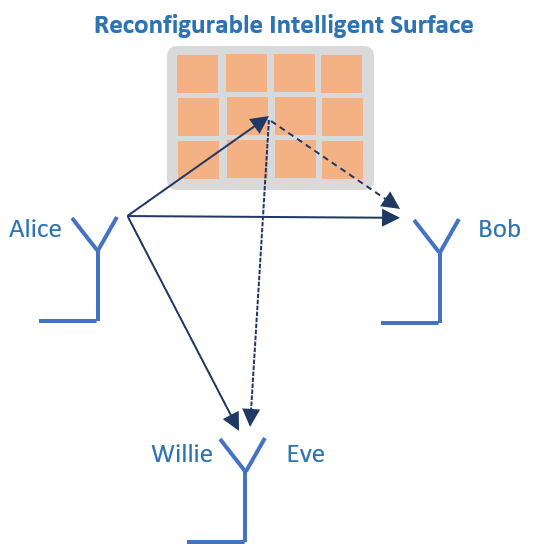Reconfigurable Intelligent Surfaces (RIS), also known as Intelligent Reflective Surfaces, are meta-surfaces that alter the electromagnetic wave properties of the signal impinging the surface. RIS can be thought of as a smart relay, as they are relaying information from one user to the next, but in addition, are optimizing the communication channel for a given task. Reconfigurable Intelligent Surfaces can be optimally controlled to improve covert communications.
For low probability of detection (LPD) applications, Alice wishes to transmit to Bob, without warden Willie knowing the communication is occurring. For secure communications applications, eavesdropper Eve knows there is communication occurring between Alice and Bob, but wants to understand the message. In both cases, the goal of the covert communication channel is to minimize the signal level of Alice at Willie and Eve, and to maximize the interference and noise levels.
An Intelligent Reflective Surface consists of a multitude of devices that are capable of altering the phase and amplitude of the impinging signal. The signal from Alice can be beamformed in the direction of Bob, intensifying the signal level at Bob. Therefore, Alice’s transmission power can be reduced with the presence of a RIS. In addition, Reconfigurable Intelligent Surfaces can beamform a signal in the direction of Willie or Eve that will be out of phase with the direct path signal of Alice. This results in an attenuation of the signal. Finally, RIS are useful in overcoming the line-of-sight requirement for mmWave covert communications by reflecting waves around obstacles.
